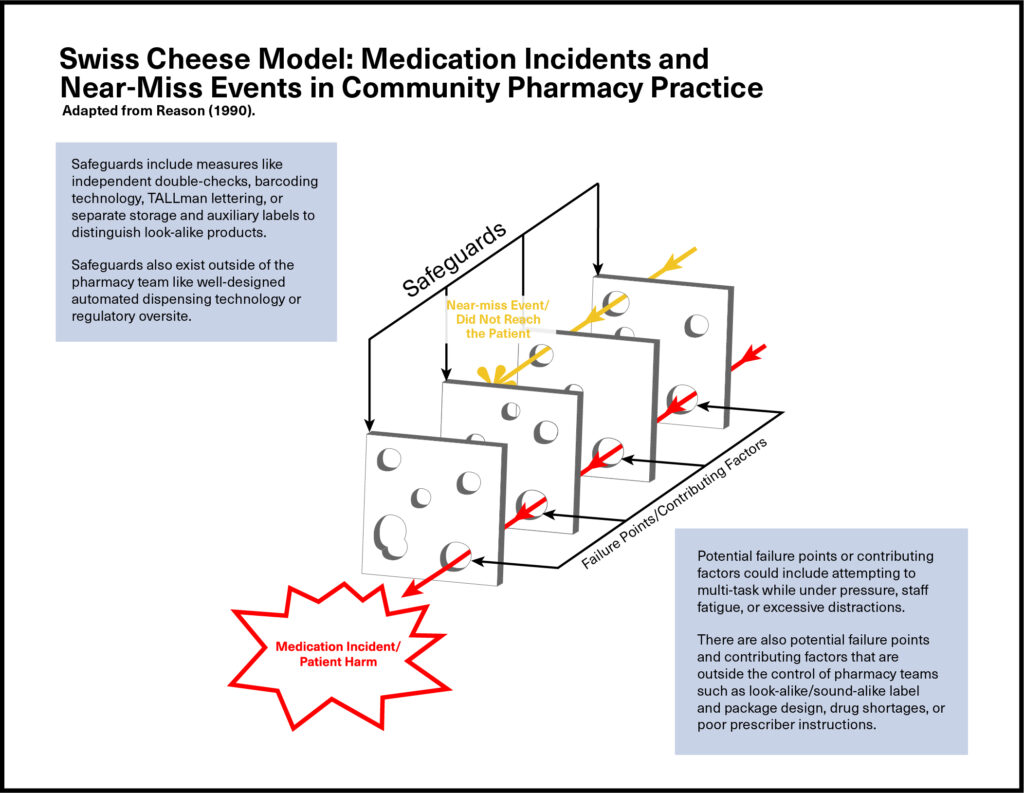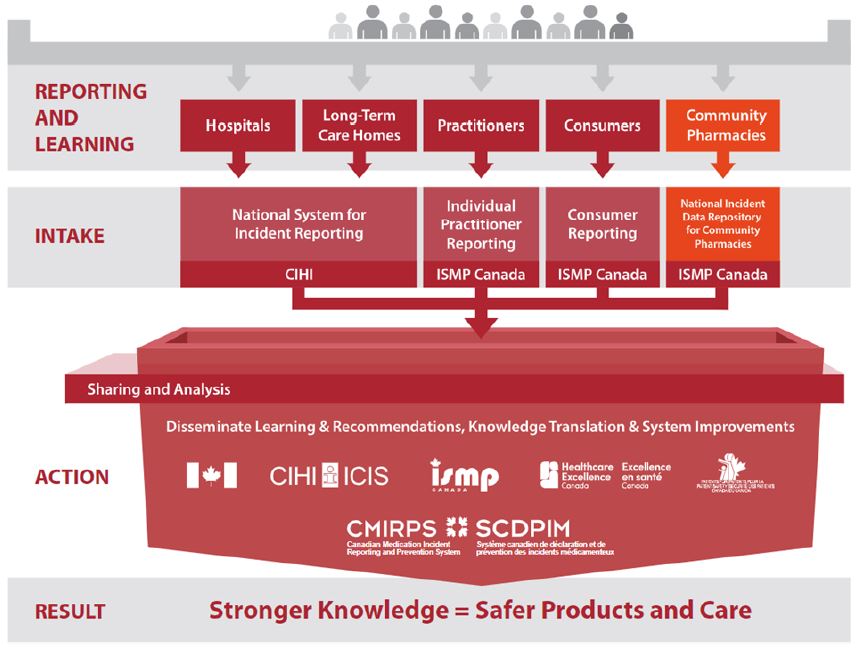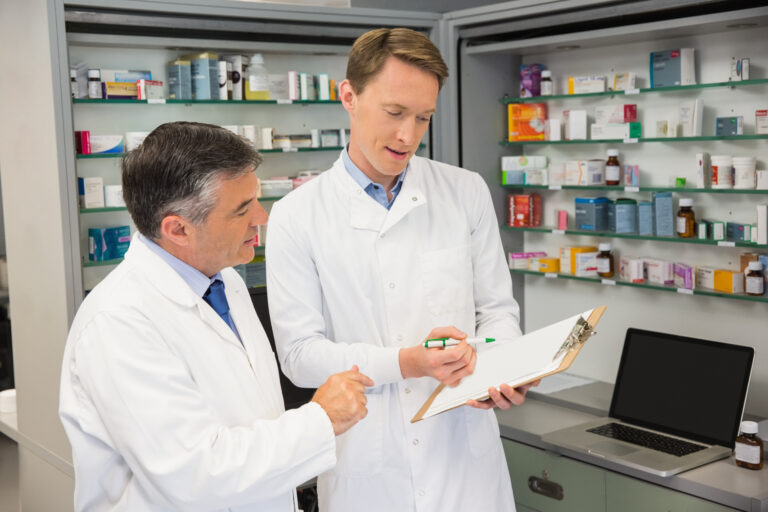Swiss Cheese Model of Accidents: Understanding the Role of Near-miss Events in Safety Systems
Near-miss events in healthcare are incidents where harm or injury was prevented because of timely intervention or good luck. James Reason’s [1] Swiss cheese model can help us understand the high-stakes value of reporting and learning from near-miss events. The Swiss cheese model is a framework for understanding how accidents or safety incidents can occur in complex systems like healthcare. It is based on the idea that overlapping safeguards against accidents or incidents still contain potential failure points when combined result in a harmful occurrence or catastrophe:
From this perspective, a near-miss event is both a warning and an opportunity. Near-miss events can tell us something about the ‘holes’ in our defense systems without the tragic outcome of patient harm. They hold signifcant value and should be reported and analyzed. Near-miss events are an opportunity to improve the entire system of medication safety stretching beyond your pharmacy practice.
Three Reasons to Encourage and Support Near-miss Event Reporting
Near-miss event reporting in community pharmacy is crucial for improving patient safety and identifying potential areas of weakness in the system. By reporting near-miss events in a non-punitive environment, healthcare providers can create a culture of safety and accountability, ultimately improving the quality of care provided to patients. Here are three key reasons you should make a habit of reporting near-miss events:
- Reporting and analyzing near-miss events improves overall quality of patient care. Near-miss events provide valuable information to your pharmacy team about potential weaknesses in your systems or processes. When your team consistently reports and analyzes near-miss events, they are taking advantage of an opportunity to identify the root causes of future harm to a patient. Near-misses offer key insights into medication safety.
- Near-miss event reporting supports a culture of safety. When pharmacy professionals feel safe reporting near-miss events, they are more likely to report actual medication incidents. A culture of safety can foster a sense of accountability and responsibility among your team. They are more likely and more able to identify potential areas of improvement and take action to address them.
- Near-miss event reports provide valuable data to national change and policy influencers without patient harm. As shown in the graphic below, your team’s near-miss event and incident data flows to the National Incident Data Repository (NIDR) for Community Pharmacies. Your de-identified near-miss event and incident data is analyzed by experts at ISMP Canada who share their insights with healthcare professionals across Canada through Safety Bulletins and educational events.

Equally important, the data you submit contributes to improving the conditions for medication safety that are beyond the control of any one pharmacy. One example of this is ISMP Canada’s Good Label and Package Practices Guides. These documents provide guidance and recommendations to drug manufacturers to support the design and development of clear and effective packaging to prevent medication incidents.
Your near-miss event reports can contribute to wider regulatory change to support the prevention of incidents like those related to package design and branding (think look-alike, sound-alike drug mix-ups). And they contribute value to pharmacy practice without the impacts of patient harm.
Near-miss event reporting is important because it helps improve patient safety, creates a culture of safety and accountability, and provides valuable data for quality improvement initiatives.
Reprinted from the College of Pharmacists of Manitoba Spring 2023 Newsletter.
[1]Reason, J. (1990) Human Error. Cambridge University Press, Cambridge.



